It’s been a few days since I got these, delayed partially by being busy (I keep saying that, and we’re close to finding out why) and partially because I knew it would take a while to write up the post. And I’m going to do things out of order because it’s better that way, maybe.
Once again, Jordan lake, but before the trip down to catch the ISS transiting the moon, which it never did. Well, I’m sure it did, if you were in the right spot, and we weren’t. And once again with Buggato too. One small section of woods was incredibly busy with bird life, noticeable only if you listened carefully and paid close attention, since most of it was from the smaller species.
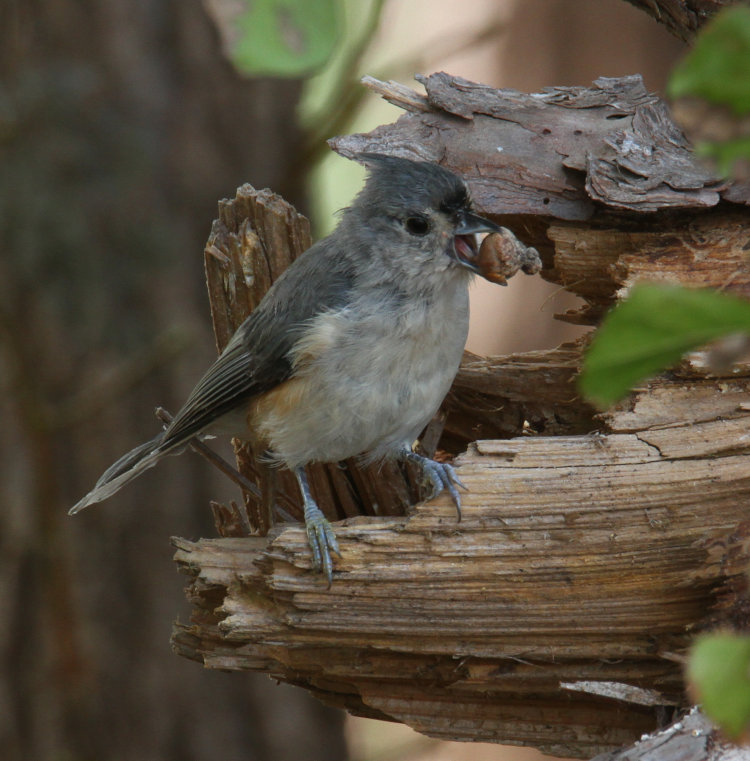
I wasn’t sure whether this tufted titmouse (Baeolophus bicolor) found this acorn in the end of a broken trunk, or brought it there, but it juggled the nut for no small amount of time in the apparent effort to lodge it securely enough to crack, which we never witnessed. If you’ve ever heard titmouses, they’re quite talkative, but not loudly, and a few of them were chattering away as this was going on.
Close by, a pair of downy woodpeckers (Dryobates pubescens) made an appearance, virtually silent except for very quite drilling.
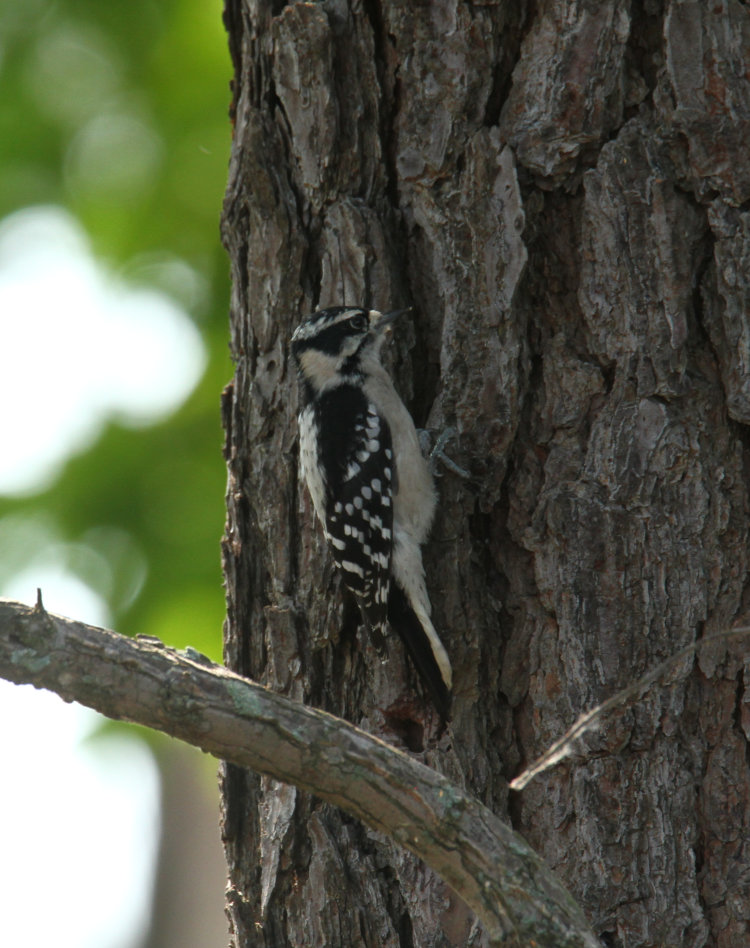
Differentiated from the hairy woodpecker by their smaller size and shorter bill, it’s extremely easy to mistake one for the other, but I’ve only ever found the downy around here anyway. This female worked her way up a trunk subtly, spotted only when she flew over to it in the first place because those markings helped her blend in against the rough pine bark. After a minute or so, however, she was chased off by a male, for reasons unknown.
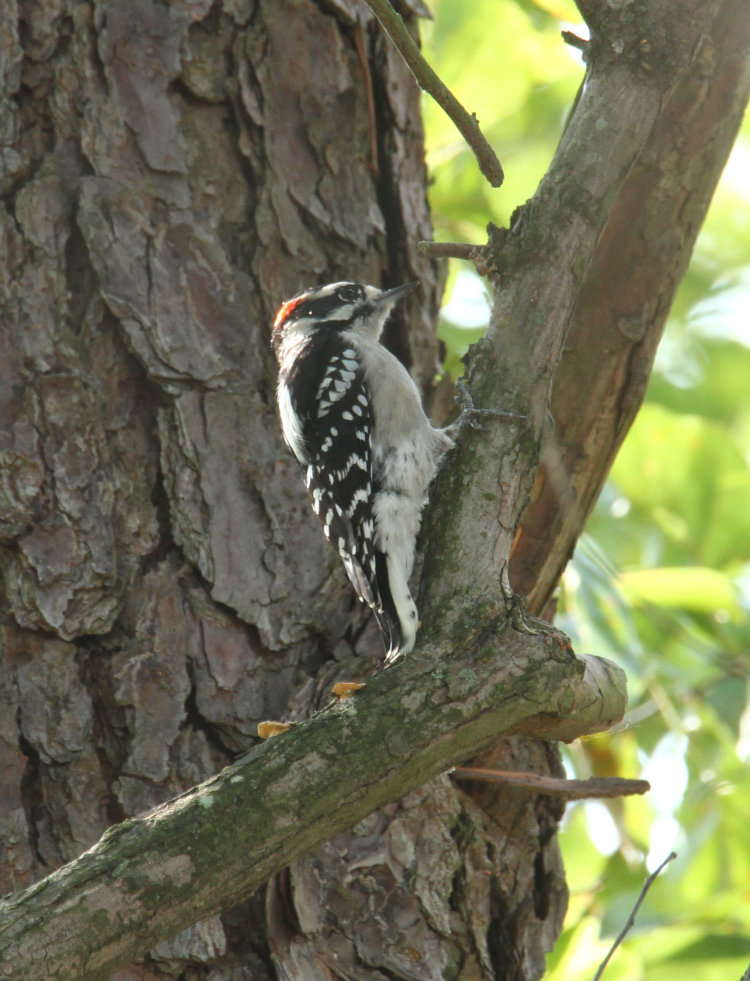
Key part here of course is the red MPB fringe, and with the sun largely behind the tree, this was the best lighting that we got (which woodpeckers also seem to exploit more often than not.) We worked our way around to the sunlit side of the copse of trees, and then of course few birds chose to show themselves. The American crows (Corvus brachyrhynchos) aren’t shy, however.
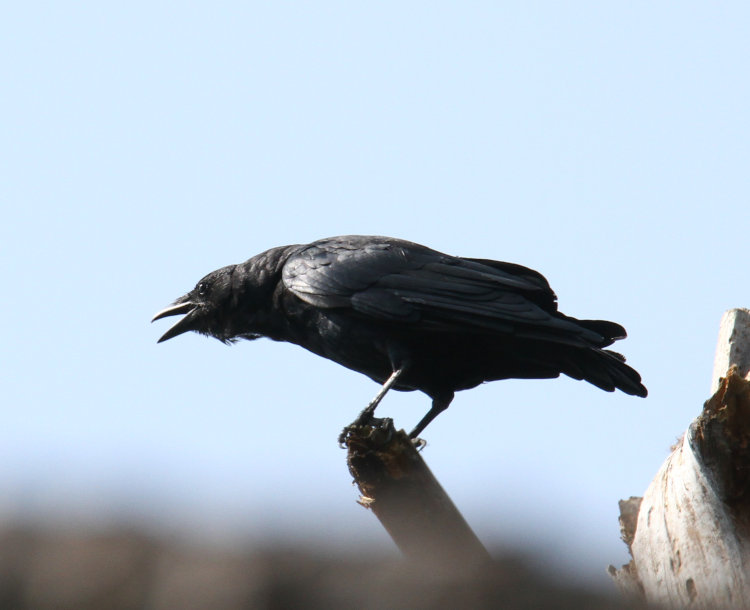
Perched in perhaps the most obvious spot in the whole woods, this one was calling enthusiastically, but not alarm calls – it simply seemed to be territorial, and this was bolstered by it taking over this spot from a red-headed woodpecker. The light angle worked for its jet-black plumage though.
Nearby, a green heron (Butorides virescens) was being shy and waiting for us to leave.
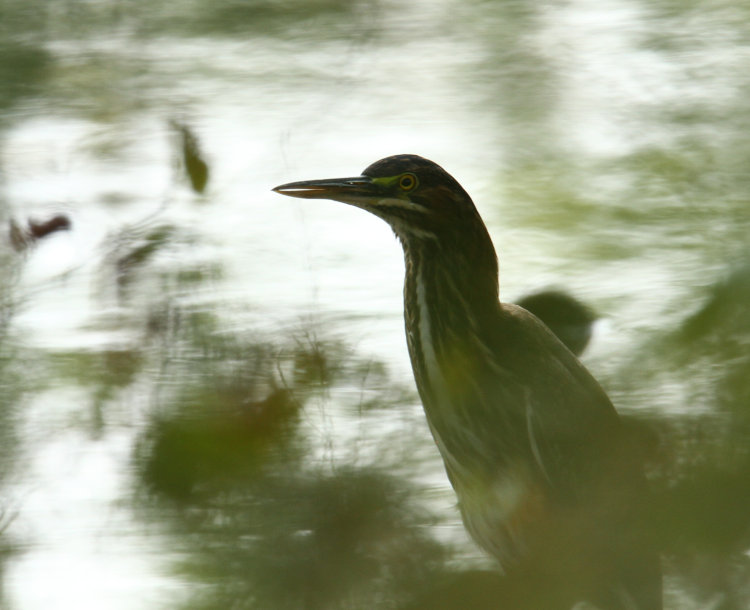
Small and unobtrusive (for herons, anyway,) the greens can be hard to spot and even harder to get clear photos of; this one was giving us a run for the money, unwilling to leave its prime hunting spot but not happy with our presence. It did a lot of slinking around on the water’s edge.
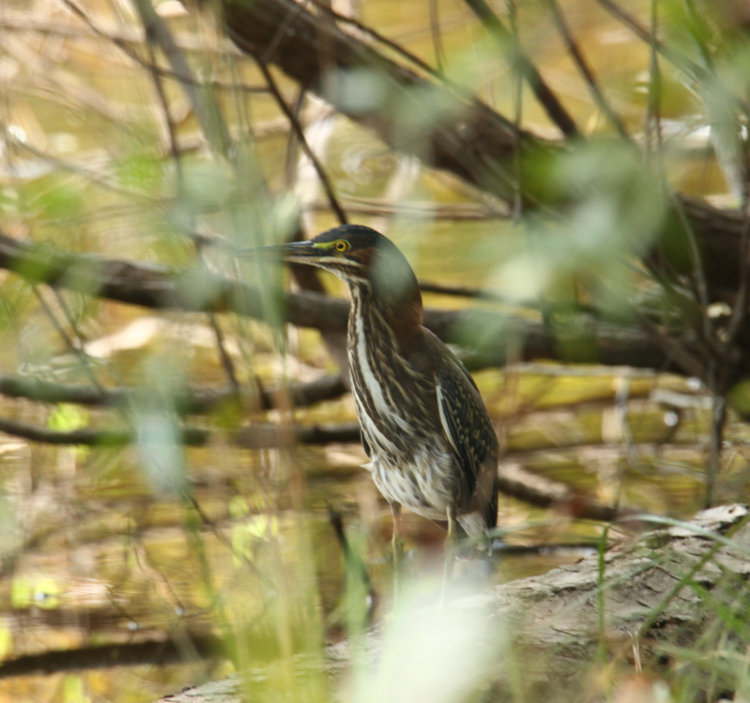
These were all shot with the longer lens and a lot of careful sidestepping to try and get a clear shot through the undergrowth, but eventually it moved just a little ways further on where we could maneuver for a cleared shot.
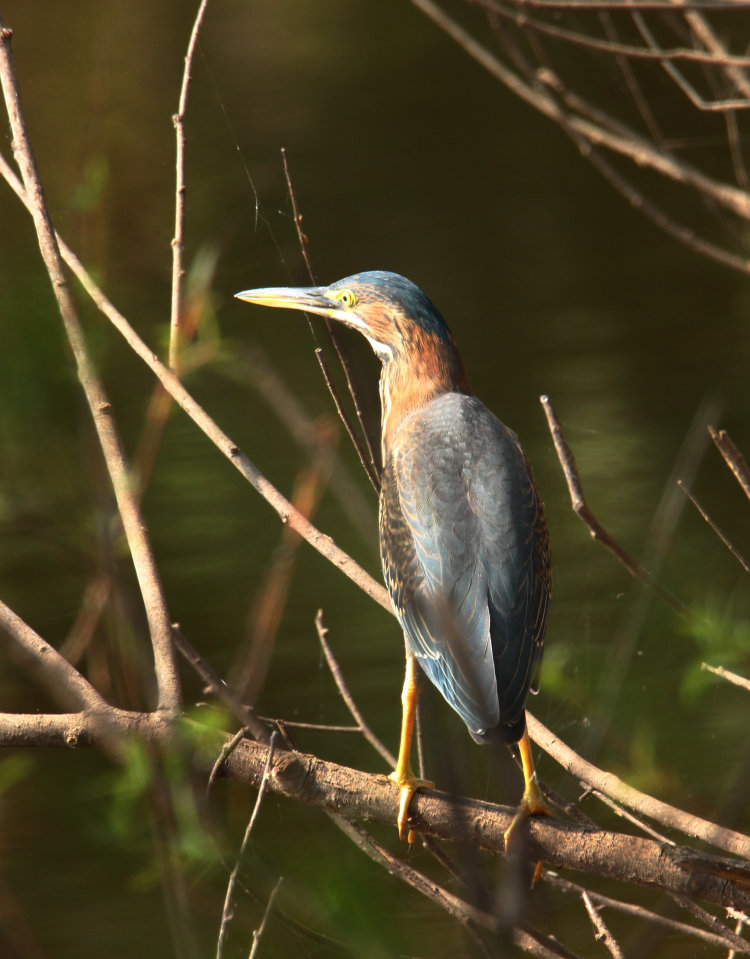
A little bit of a pose in the sunlight, and that was it. The great blue herons (Ardea herodias herodias) were a bit more cooperative.
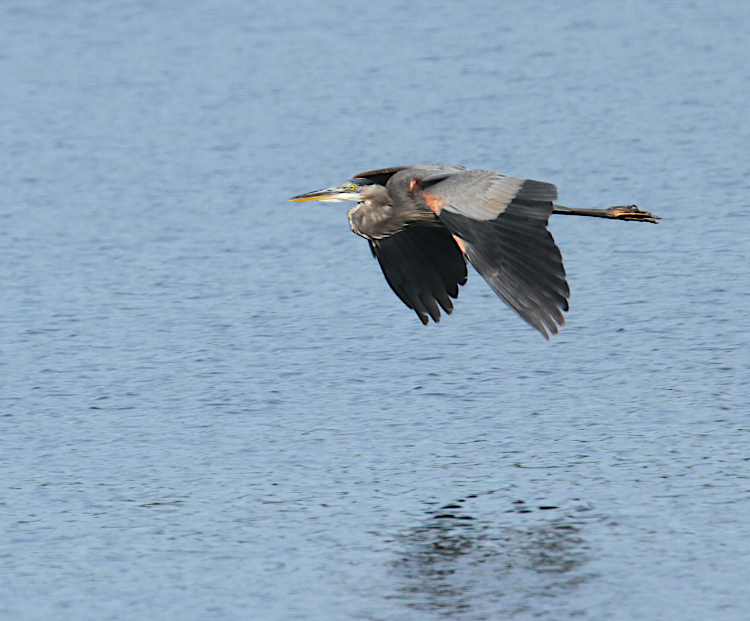
This was one of a pair that were fishing along the lakeshore but refused to let us get too close, though at least it flew past in good later afternoon light. At another location, the subject there was more cooperative but there was no way to get better lighting on it:
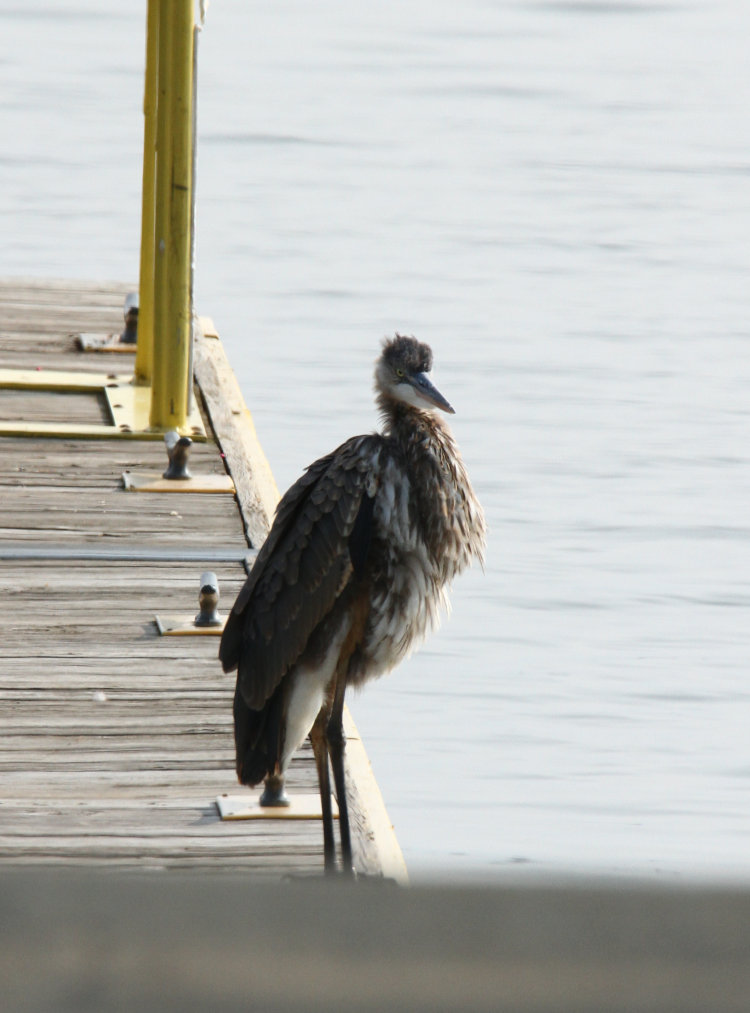
The barred/speckled markings on the throat and chest, as well as the overall more brownish hue, pegs this as a juvenile, this year’s brood. It was quite complacent in its spot on the docks, and even let a boat approach to within eight meters or so before it decided that was too close.
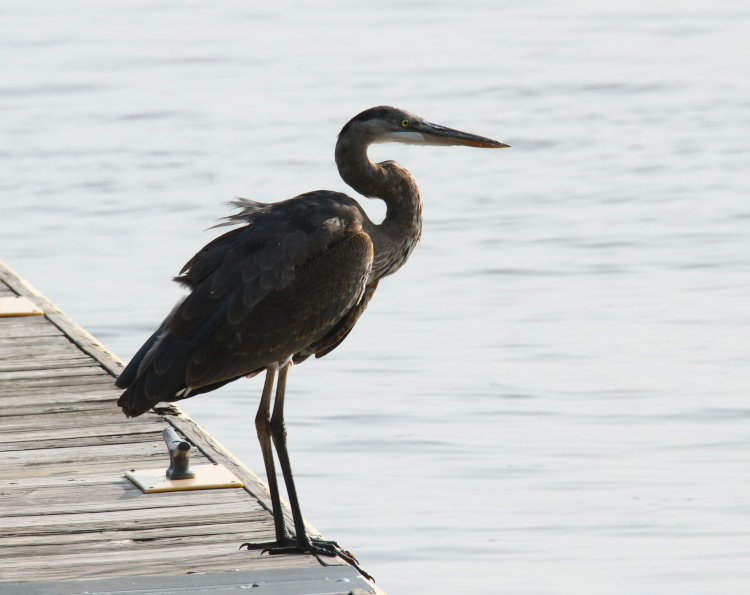
Typical adolescent: done grooming but missed a spot. This was closing in on sunset but without any kind of decent sunset colors. Am I surprised?
Actually, I was slightly surprised by this one, ninety degrees away anti-sunward at the same time:
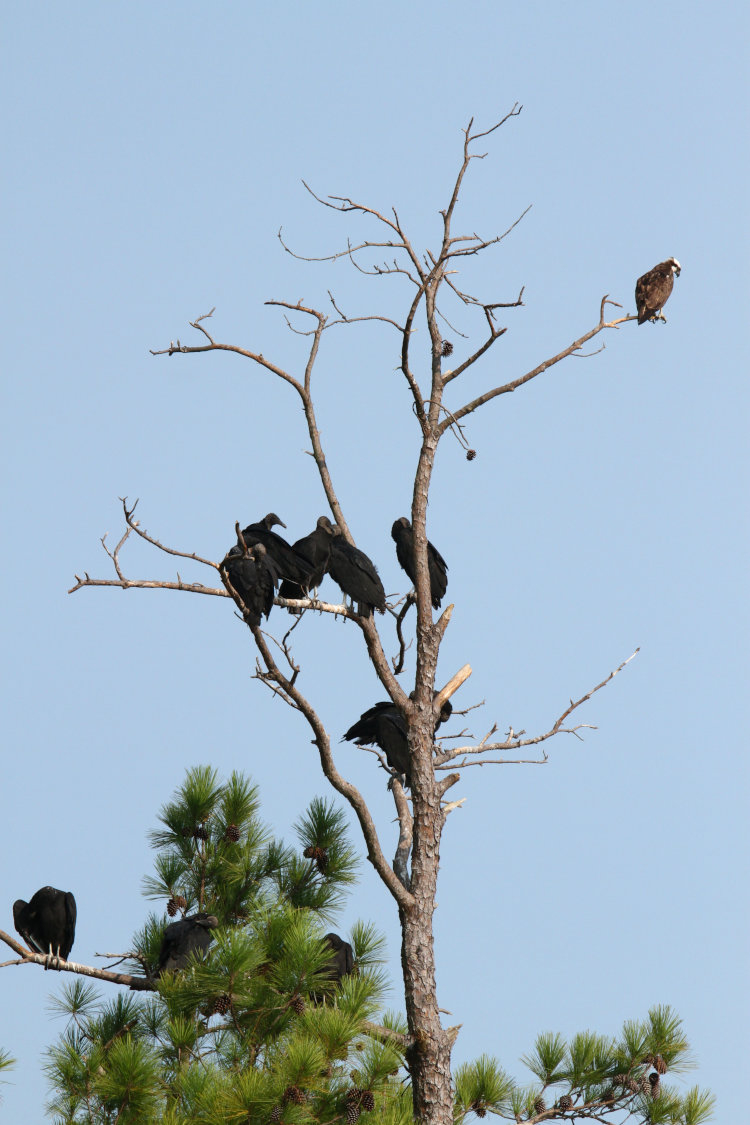
That’s a single osprey (Pandion haliaetus) up there to the right, hanging out with an entire flock of black vultures (Coragyps atratus.) There’s no animosity nor prey competition between these two species, but osprey tend to be solitary birds and this is the first I’ve seen one perching among other species, or even a flock of its own. I mean, sure it’s way out there away from everyone like the kid with the eight-crayon box, but at least it’s in the same tree. And you have to admit the body positions all give the same cliquish impression.
Further on, I heard a belted kingfisher (Megaceryle alcyon) chattering as it came closer, and I tracked it carefully when it came into view. The species is notoriously shy and my attempts to creep closer to its perching spot didn’t net any decent frames, foliage always getting in the way, and the bird flew off while I was attempting to subtly slip past this; so much for my stalking. But it took a perch twice as far away on top of an old snag, and I could get a few frames there:
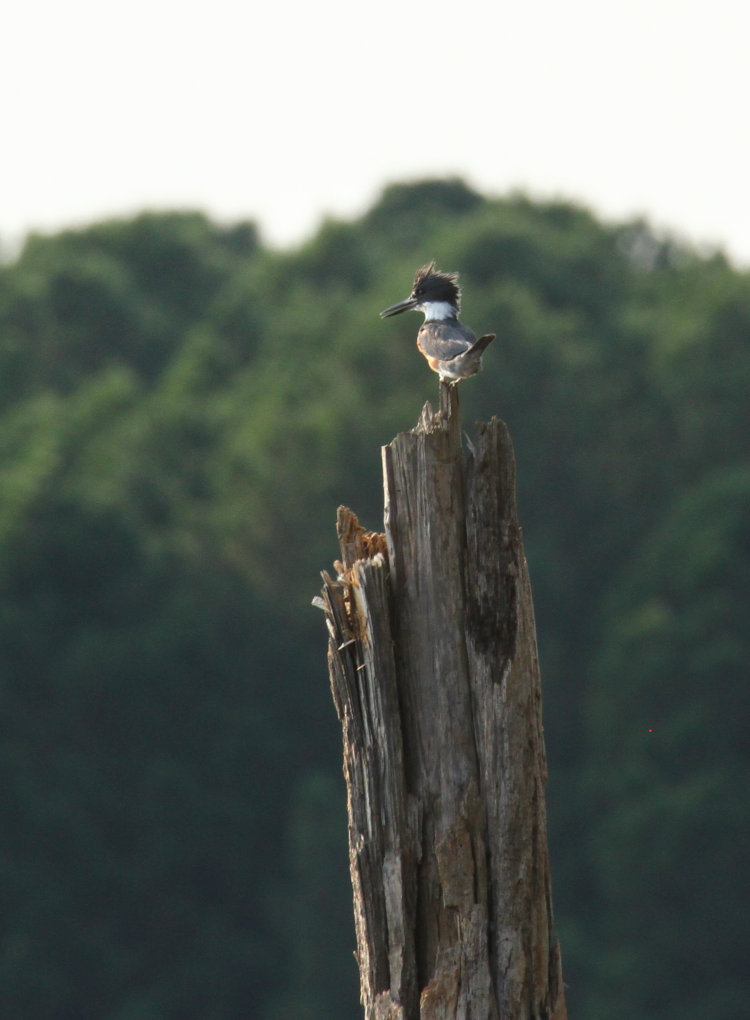
You can’t make out the brown neck band that denotes this as a female, but it’s there in the other semi-obscured attempts, so take my word for it. The raised crest feathers are very typical of the species, always seeming upset about something – now I have to snag a photo of one with the crest down. But at least I could manage an angle without the bright sky directly behind the bird bleaching out the edges (or forcing the exposure much lower.) Tiny victories.
How about another vulture? (he asks, plowing ahead without waiting for an answer…)
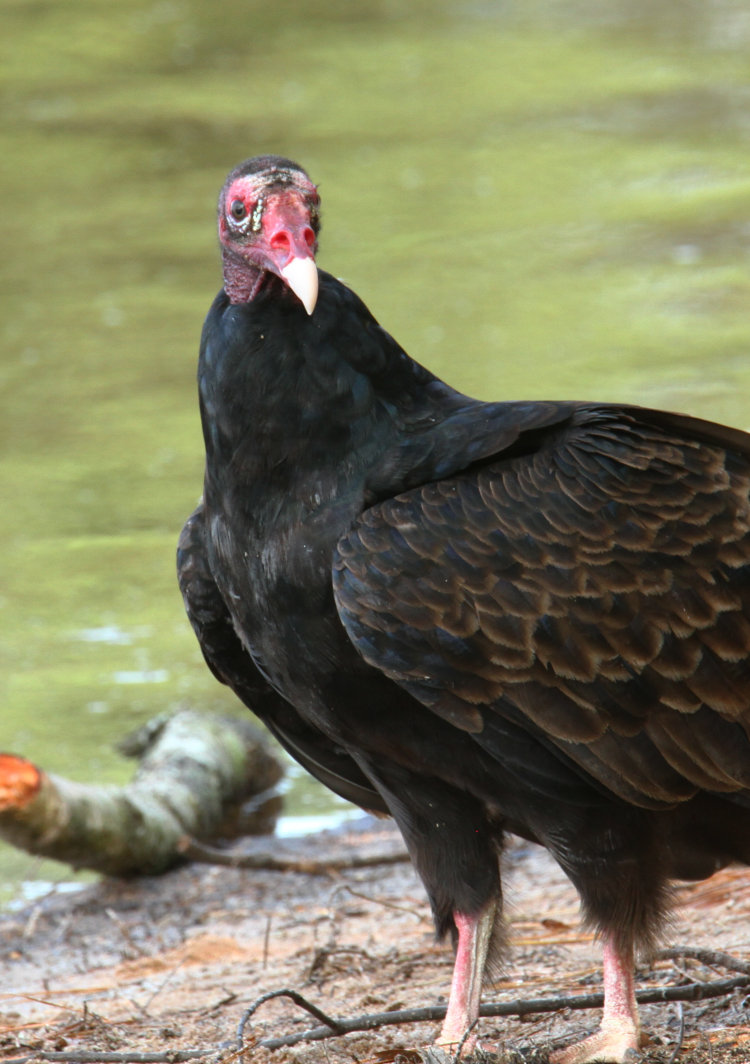
This one came cruising in for a landing as we stood there, and we endeavored to remain quiet for the portrait – look at them nostrils. It’ll it least distract you from the rest of the head – which, because it’s bare of feathers, seems tiny in comparison to the body, but having handled many birds, I can tell you that the body feels scrawny too and matches the head in appropriate proportions. Owls are the most startling; they seem to have no neck at all, going from shoulder to head dome. but then you reach in to secure the head against tearing into you (this is from wildlife rehab, so chill,) and you find this measly little thing buried in the feathers between head and shoulders that isn’t much bigger than your thumb. It’s disturbing.
But now let’s get to the real captures of the day, which actually occurred very early on. It was a quiet day and as we worked our way along the lakeshore, I suggested keeping an eye on the bordering trees, especially high up, because I suspected there might be some raptors perching there and it would be better to see them before they spooked. But then, not twenty meters away, I hear something crashing down through the pine needles, heavier than a pine cone, and suspected that it had been dislodged up above – I was expecting a squirrel or something. Yet the shape that was revealed told me that my intentions and abilities were not in alignment, because we were far closer to this guy than it should have allowed.
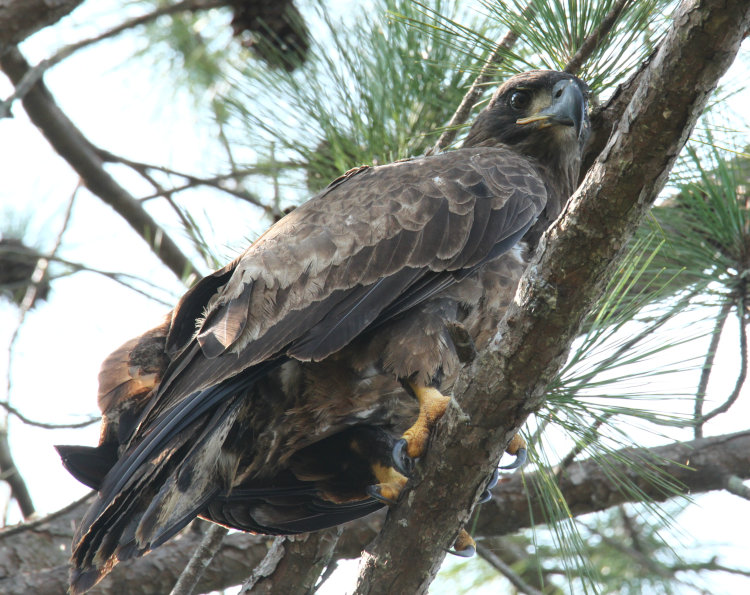
That’s the juvenile plumage of a second-year bald eagle, and it was roughly ten meters above our heads in the pine tree. We fired off tons of frames as we crept closer, knowing that at any time it would decide we were too close and fly away – which it did not do. The potential explanation for this was forthcoming.
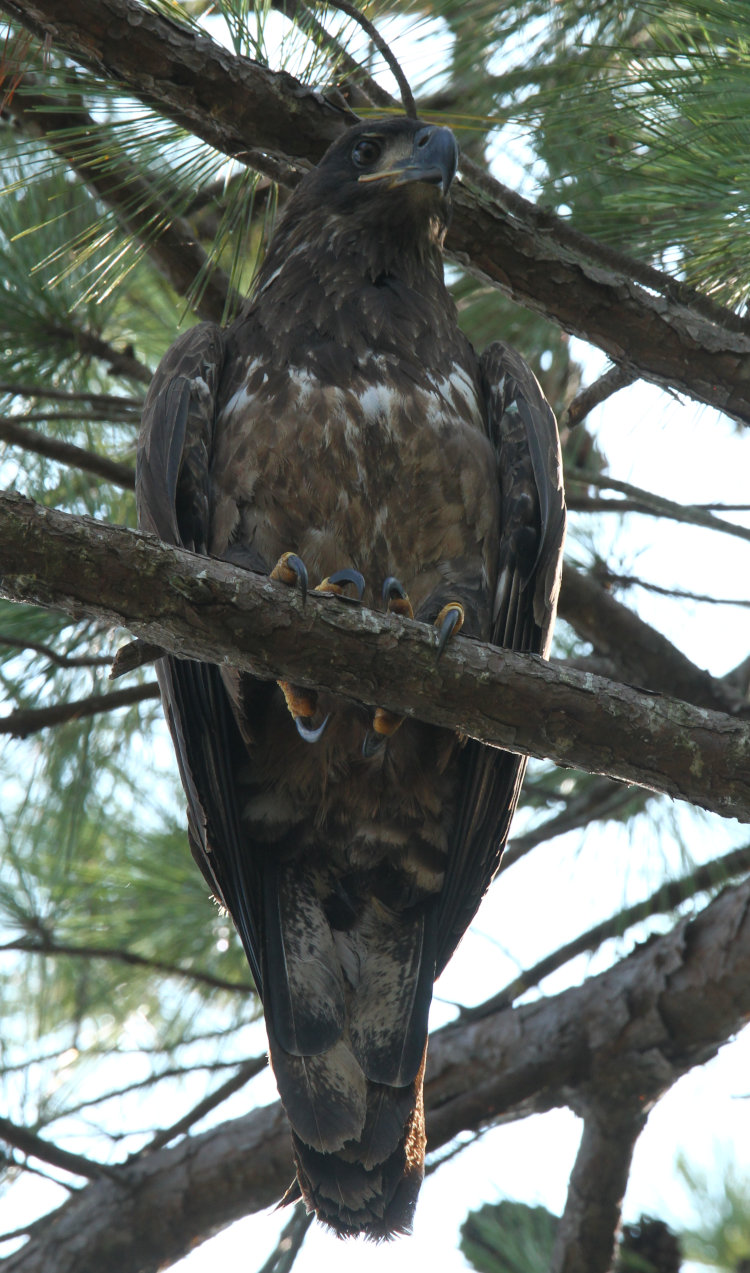
While I was in a bad position – not this one – the eagle vomited something up, and then again a minute or so later, which I missed because the pine needles that were intervening at that point grabbed the autofocus away from the eagle itself. It was likely this that I’d heard crashing down through the pine needles, though a subsequent examination under the tree only turned up half of a minnow and a medium-sized patch of fish skin. There was what appeared to be a fresh-ish persimmon nearby, which eagles don’t eat – had it consumed this by accident and was trying to get rid of it? I can’t say. Meanwhile, the eagle regarded us without alarm.
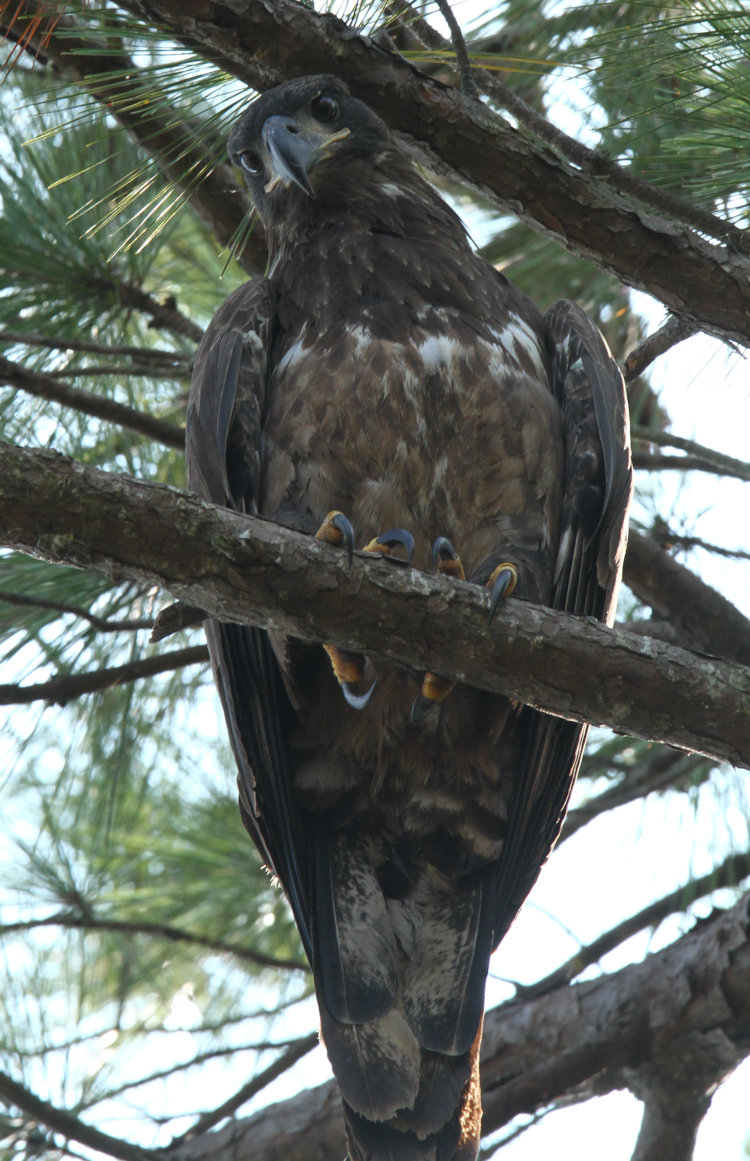
What a great pose, and to our credit, we were remaining silent and casual, not alerting the bird with predatory fixation behavior, though as high up as it was, it likely wasn’t very concerned. But we’d gotten right underneath the eagle and it simply watched us curiously so, great opportunity.
Off in the distance, another was wheeling out over the lake, and we fired off some frames of that one too.
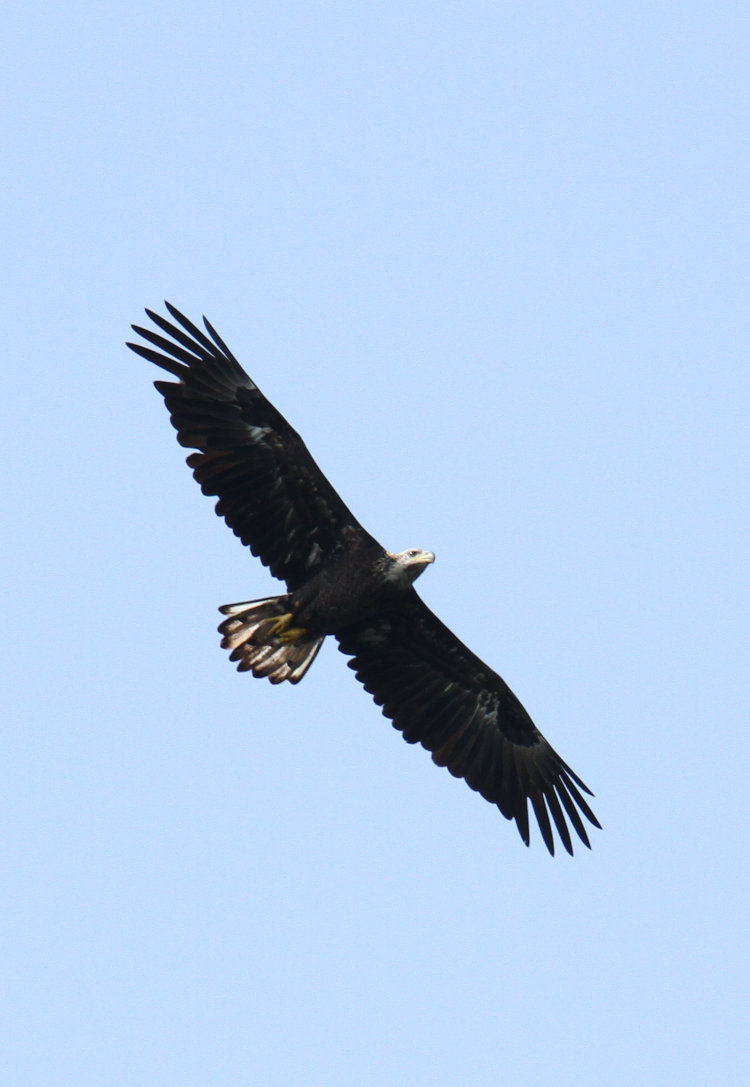
This is a third-year juvenile instead, so not a sibling – or at least, not an immediate sibling. Nonetheless, while we were watching this one and further away than we had been, the second-year one overhead took flight and headed in this direction. They never drew close together or exhibited any kind of territorial behavior, so the reasoning behind this was lost to us, but at the same time the apparently ill specimen was showing no signs of distress.
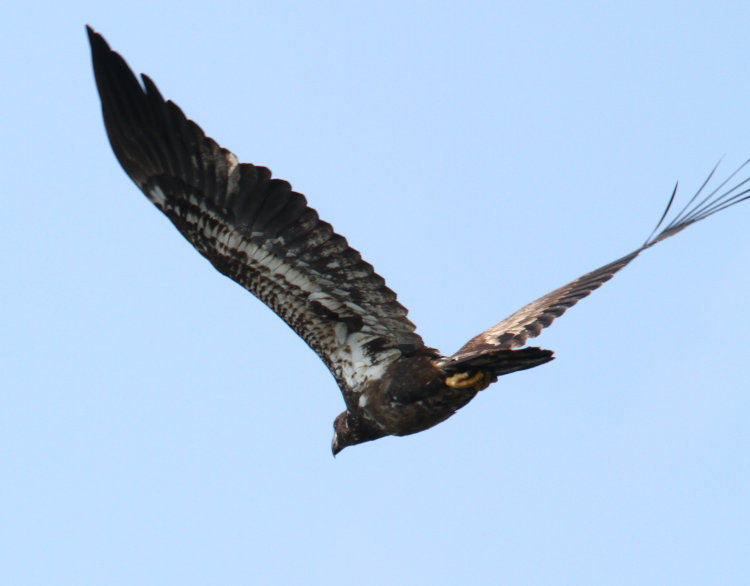
Getting even more frames as it flew off allowed me to compare the markings, especially under the wings, with photos from previous outings to the same location in an attempt to see if we’d photographed this one before. Answer: not to any appearances – the markings all have distinctive differences. So how many eagles are actually hanging out in the area? It might take a lot of long-distance photography and cataloging plumage variations to determine, and this can only be done between molts, since that act alone can change the appearance.
Anyway, you can see why I left these for the end, even though they were close to the beginning of the outing. Far more luck than we’ve had on many days out there, but that’s why you keep returning.



















































